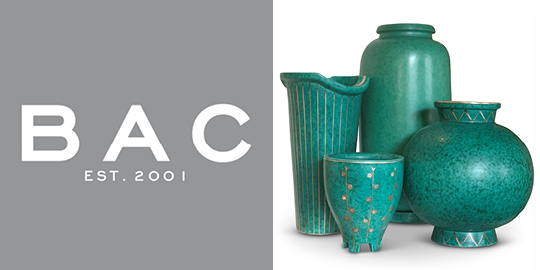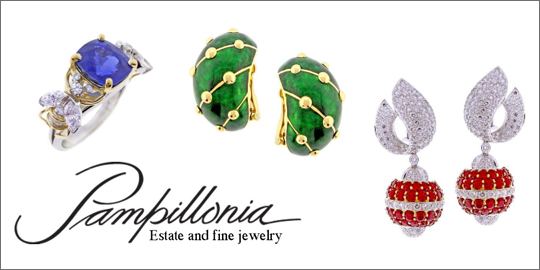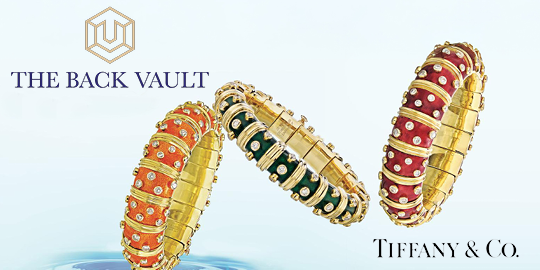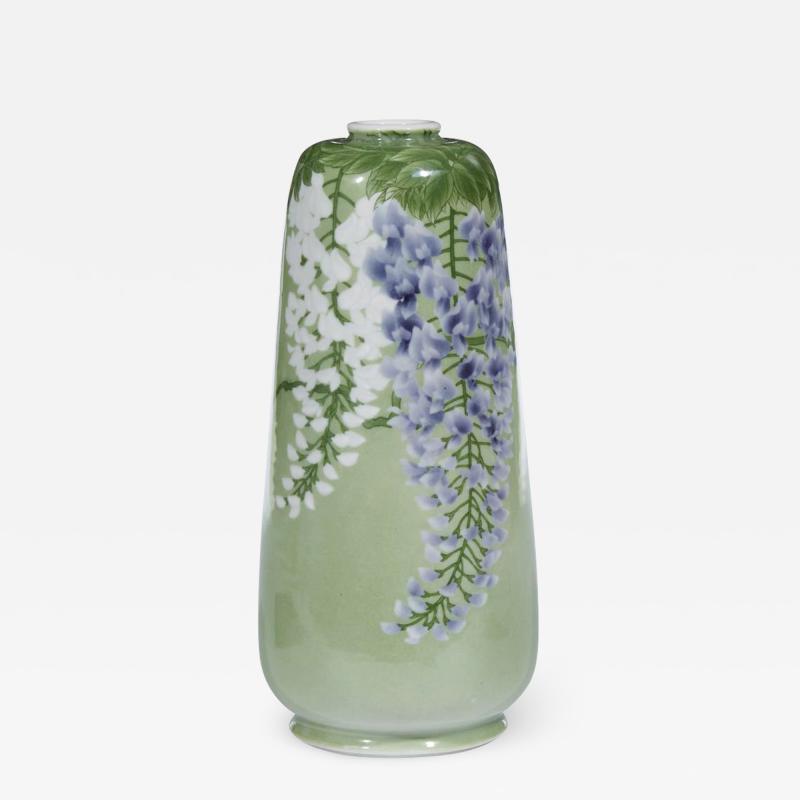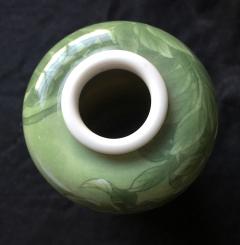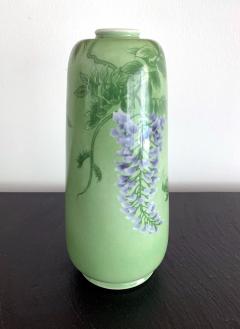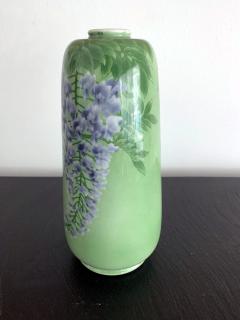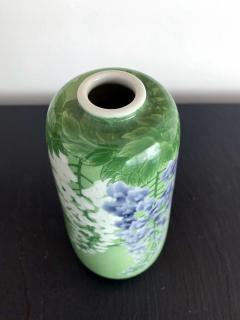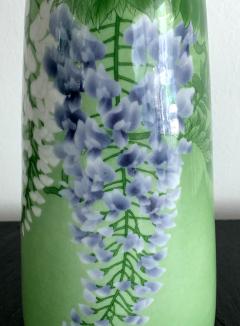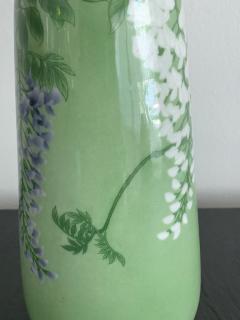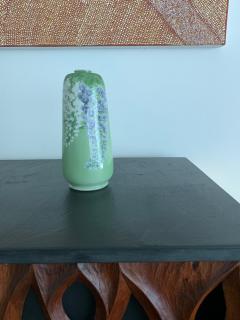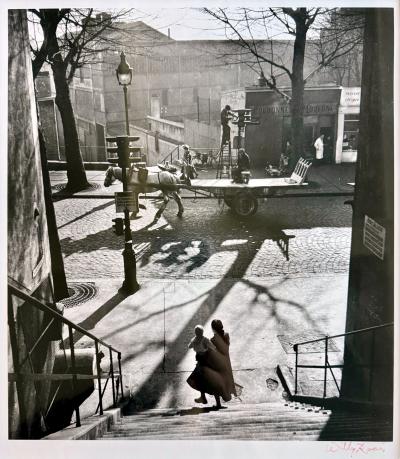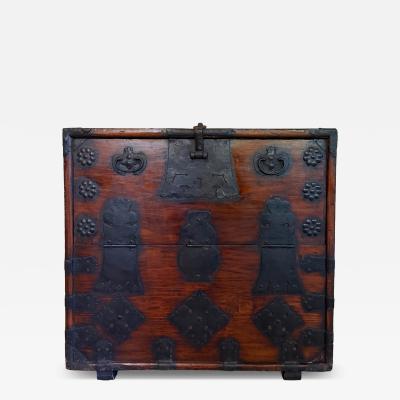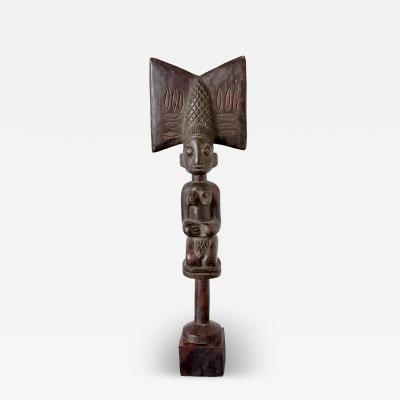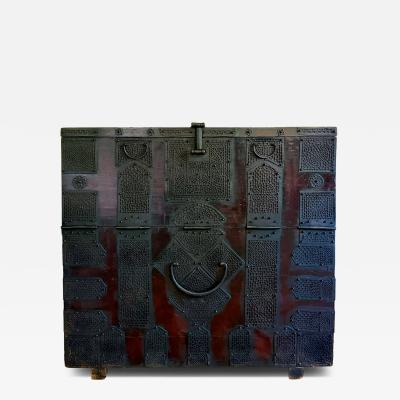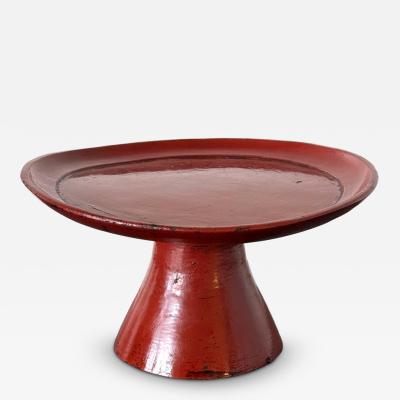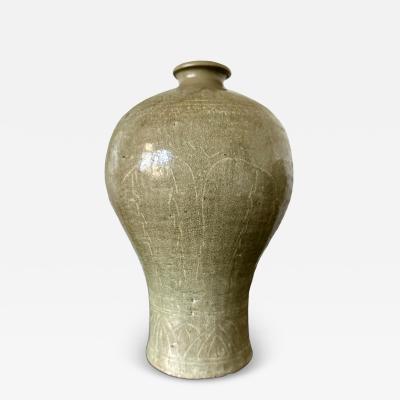A Japanese Porcelain Vase by Makuzu Kozan Meiji Era
-
Description
An elegant vase with in tapering ovoid shape with wisteria design by Miyagawa Kōzan (1842–1916), one of the most established and collected Japanese ceramist from Meiji Period. Commonly known as Makuzu Kozan, which also appears as the signature on his work, his originally birth name was Miyagawa Toranosuke. He was the appointed artist to the Japanese Imperial household and his work was exhibited in many international fairs that the Meiji government participated at the turn of the century.
The vase has a beautiful celadon green color in a graceful form, on which bundles of white and blue wisteria flowers sway in the wind. This design was one of the most iconic used in porcelain and cloisonne during Meiji period. It reflects the beloved poetic plant in full bloom, at the peak but also with a sense of a fleeting glory, a Japanese aesthetic that emphasizes on ephemeral beauty.
For a vase by Makuzu Kozan with a similar wisteria design in the collection of Ashmolean Museum Oxford England, see page 22 of Japanese Decorative Arts of the Meiji Period by Oliver Impey and Joyce Seaman. Story fund number 1991.1 -
More Information
Documentation: Signed Notes: signed Origin: United States Period: 1900-1919 Materials: ceramic Condition: Good. Fine antque condition, some kiln mark on the base Creation Date: 1900-1910s Styles / Movements: Modern, Art Pottery, Asian Incollect Reference #: 298727 -
Dimensions
H. 9.75 in; Diam. 4.2 in; H. 24.77 cm; Diam. 10.67 cm;
Message from Seller:
Tishu, based in Atlanta, GA, offers a diverse collection ranging from Neolithic art to 20th-century collectibles, with a focus on Mid-century design, Japanese and Korean art, Asian textiles, and Contemporary Aboriginal art. Driven by a passion for timeless beauty, the gallery is open by appointment only and offers works that span 5,000 years of history. Reach them at 305-400-0561 or tishu@tishugallery.com.
Sold








